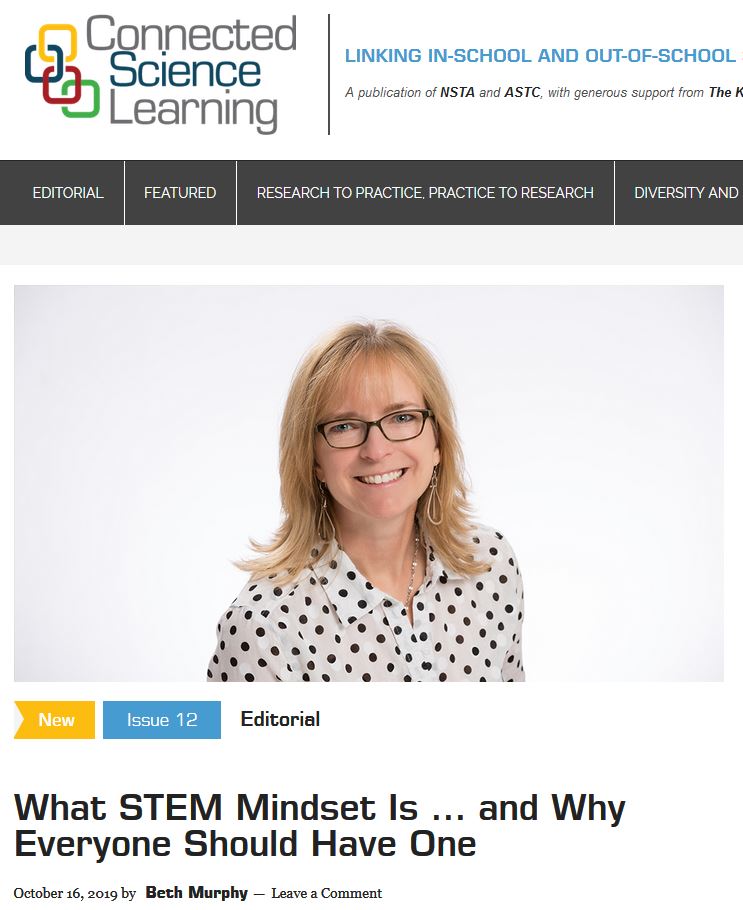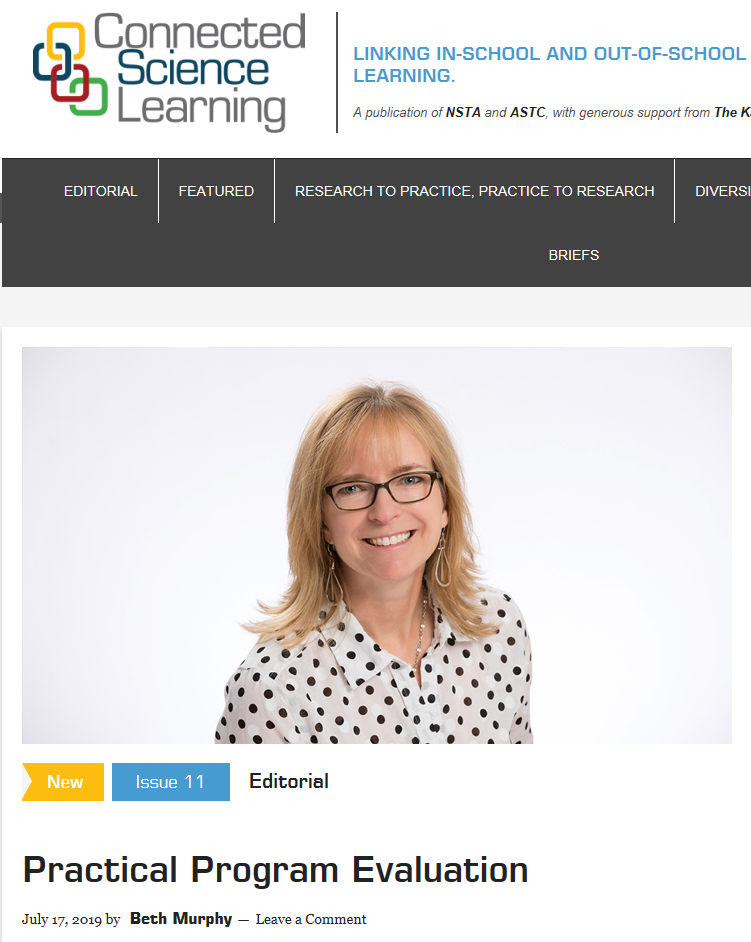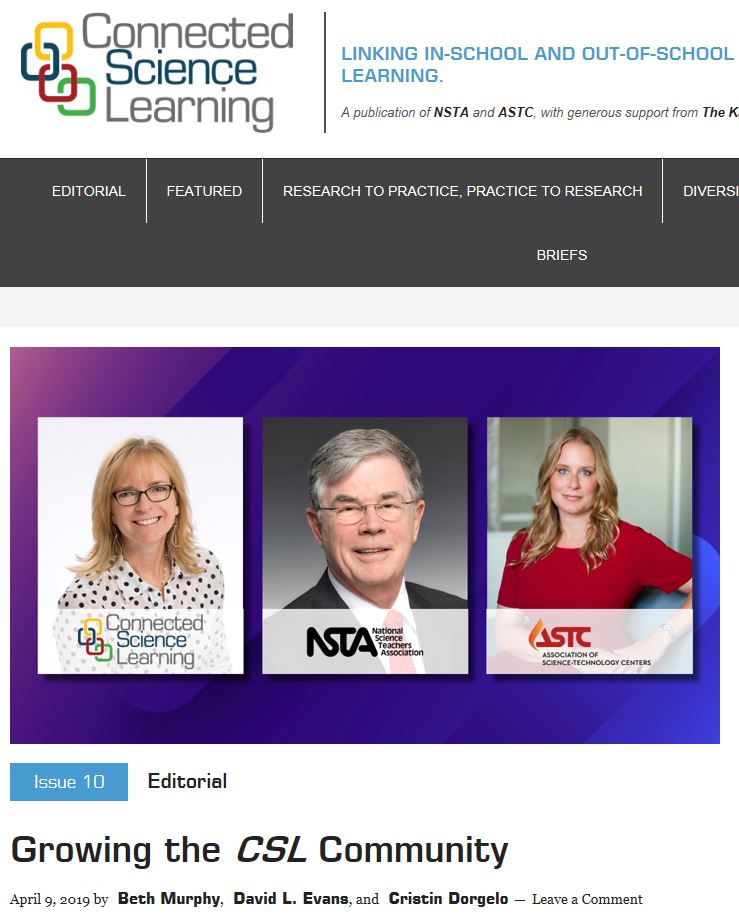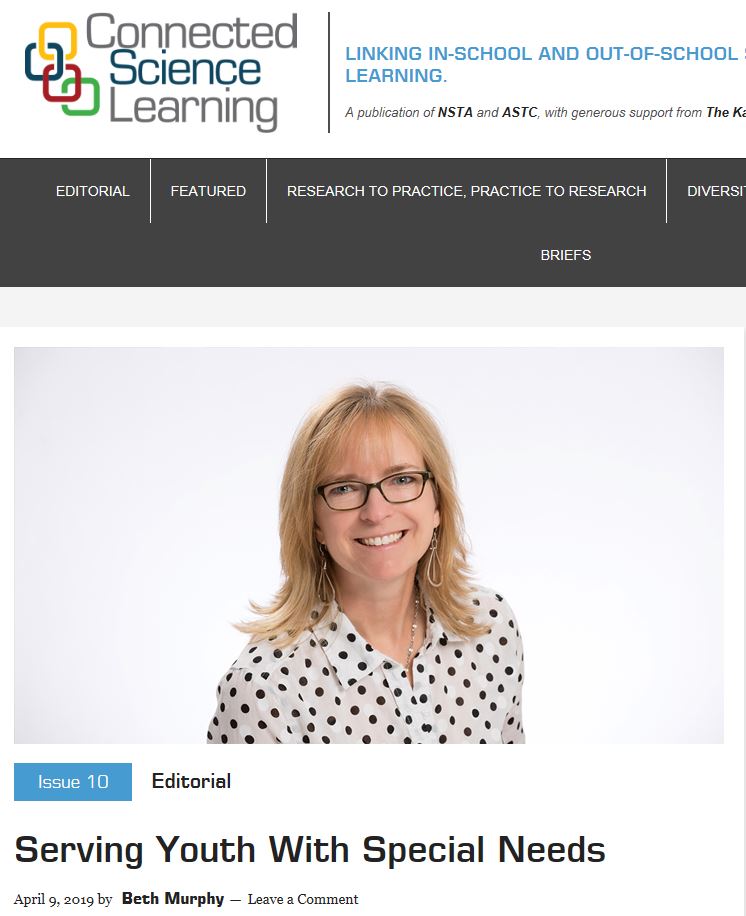By Beth Murphy published Nov/Dec 2019 in Dimensions Magazine by the Association of Science and Technology Centers (ASTC) For most of my career in science and STEM education, I’ve worked at the interface between museums or other educational institutions and schools, finding synergies in their efforts to improve science learning experiences for kids and their teachers. When organizations work together,
What STEM Mindset Is … and Why Everyone Should Have One
“A STEM (science, technology, engineering, and math) mindset encompasses many things, and perhaps does not mean the same thing to every person. Many believe, however, that it combines general attributes that are independent of an individual’s academic and career pursuits with STEM-specific elements. STEM mindset is important for scientists and engineers—it certainly helps them succeed in what they do.
Practical Program Evaluation
“Throughout my career I’ve seen how powerful program evaluation can be when it is done well. For example, a few years back I was project director for a program called STEM Pathways—a collaborative effort between five organizations providing science programming for the same six schools. Much about our program evaluation experience sticks with me: how important it was to involve program
Growing the CSL Community
“In this discussion, Field Editor Beth Murphy, NSTA Executive Director David Evans, and ASTC President and CEO Cristin Dorgelo discuss the origins of Connected Science Learning, and what’s next for the journal. The conversation has been edited for length and clarity.” READ MORE
Serving Youth With Special Needs
“In the STEM (science, technology, engineering, and math) education community, we are well aware that “the representation of certain groups of people in science and engineering education and employment differs from their representation in the U.S. population” (NSF 2017). Included in these underrepresented groups are people with disabilities, whose participation in STEM education and occupations is often impeded by various
STEM Careers for the 21st Century
“Regarding this issue’s theme—encouraging youth to pursue STEM careers—I find myself reflecting on how the definition of a STEM career has changed since I was looking for my first job. When I was a graduate student in physics in the early 1990s, STEM workforce concerns were focused on the supply of PhD scientists and engineers available to conduct research and






